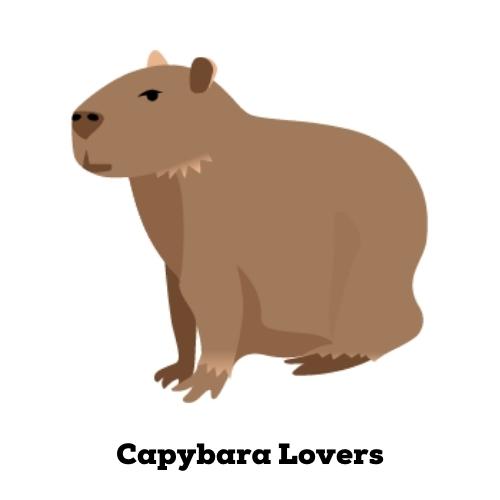
Introduction to Capybara Conservation
Conservation is a topic that is close to the heart of many people worldwide. One of the creatures that has been a focus of these efforts is the Capybara. The Capybara is the largest rodent in the world and is native to South America. Their survival is crucial to maintaining the balance of their ecosystems. This introduction will help you understand the importance of Capybara conservation and the threats they face.
-
- Understanding the Importance of Capybara Conservation
Capybaras play a vital role in their ecosystems. They are a food source for many predators, and their grazing habits help control vegetation. Conserving Capybaras ensures the survival of these ecosystems. Additionally, Capybaras are a beloved species, known for their friendly and social behavior. Their loss would be a significant blow to biodiversity and the natural beauty of their habitats.
-
- Overview of the Threats Faced by Capybaras
Capybaras face several threats to their survival. Habitat loss due to deforestation and urbanization is a major concern. They are also hunted for their meat and skin. Climate change poses another significant threat, as it can lead to changes in their habitat and food sources. These threats are severe, but with concerted conservation efforts, they can be mitigated.
In the following sections, we will delve deeper into the success stories of Capybara conservation, the global efforts to protect them, and the inspiring examples of Capybara survival. We will also look to the future of Capybara protection and what it holds. Stay tuned to learn more about these fascinating creatures and the efforts to conserve them.
Triumph in Animal Conservation: The Capybara Success Stories
Animal conservation is a critical aspect of maintaining the balance of our ecosystem. One of the most inspiring success stories in this field is the conservation of the Capybara species. Let’s delve into some of the most impactful case studies that highlight the triumph in Capybara conservation.
Successful Wildlife Conservation: Case Studies
There are numerous instances where concerted efforts have led to a significant increase in the Capybara population and preservation of their habitats. Here are two notable case studies:
-
- Case Study 1: Capybara Population Increase in Argentina
In Argentina, the Capybara population was dwindling due to excessive hunting and habitat loss. However, a concerted effort by the government and local communities led to a remarkable turnaround. Strict hunting regulations were implemented, and efforts were made to educate locals about the importance of Capybaras in the ecosystem. As a result, the Capybara population in Argentina has seen a significant increase in recent years.
-
- Case Study 2: Capybara Habitat Preservation in Brazil
In Brazil, the Capybara’s natural habitat was under threat due to deforestation and urbanization. The Brazilian government, in collaboration with various conservation organizations, initiated a project to preserve and restore the Capybara’s natural habitat. This included the creation of protected areas and the implementation of sustainable land-use practices. This initiative has been successful in preserving the Capybara habitat, leading to a stable population in the region.
These case studies demonstrate the power of collective action in preserving wildlife and their habitats. They serve as a beacon of hope and a model for other conservation efforts worldwide.
| Case Study | Country | Conservation Effort | Outcome |
|---|---|---|---|
| 1 | Argentina | Strict hunting regulations and community education | Significant increase in Capybara population |
| 2 | Brazil | Preservation and restoration of natural habitat | Stable Capybara population |
These triumphs in Capybara conservation are a testament to the power of concerted efforts in preserving our wildlife. They remind us of our responsibility to protect and conserve our natural world for future generations.
Capybara Protection Efforts: A Global Perspective
As we journey around the world, we can see the efforts made by different countries to protect the capybara, the world’s largest rodent. Let’s take a closer look at the efforts in South America, North America, and Europe.
-
- Efforts in South America
South America, the native home of the capybara, has been at the forefront of their conservation efforts. In countries like Brazil and Argentina, local communities have been educated about the importance of preserving the capybara’s habitat. They’ve implemented laws to prevent hunting and created protected areas where capybaras can live without threat. For instance, in the Pantanal, the world’s largest tropical wetland area, capybaras are thriving thanks to these efforts.
-
- Efforts in North America
In North America, the focus has been on raising awareness about the capybara and its conservation needs. Zoos across the United States and Canada have capybaras in their exhibits, providing educational programs to teach visitors about these fascinating creatures. They also support conservation projects in South America, contributing to research and habitat preservation.
-
- Efforts in Europe
Europe, though not home to wild capybaras, plays a significant role in their conservation. European zoos participate in breeding programs to ensure a healthy population of capybaras in captivity. They also fund conservation projects in South America, helping to protect the capybara’s natural habitat. For example, the European Association of Zoos and Aquaria (EAZA) has funded several projects aimed at capybara conservation.
In conclusion, the global efforts to protect the capybara are diverse and widespread. From the grasslands of South America to the zoos of North America and Europe, many are working hard to ensure the survival of this unique species. These efforts remind us of the importance of global cooperation in preserving our planet’s biodiversity.
Success in Capybara Conservation: Key Takeaways
As we delve into the world of capybara conservation, it’s important to understand the key strategies that have led to its success. These strategies have not only helped protect the capybara population, but they also provide a blueprint for other wildlife conservation efforts.
Strategies for Successful Wildlife Conservation
There are three main strategies that have been instrumental in the success of capybara conservation. Let’s take a closer look at each of these.
-
- Strategy 1: Community Engagement
One of the most effective strategies in wildlife conservation is engaging the local community. In the case of the capybara, local communities were educated about the importance of these creatures to the ecosystem. They were also trained on how to coexist with the capybaras, reducing conflicts and promoting harmony. This strategy has proven to be effective in reducing illegal hunting and habitat destruction.
-
- Strategy 2: Government Policies
Government policies play a crucial role in wildlife conservation. In many countries where capybaras are found, governments have implemented strict laws against hunting and trading of these animals. They have also set aside protected areas where capybaras can thrive without human interference. These policies have significantly contributed to the increase in capybara populations.
-
- Strategy 3: Scientific Research
Scientific research has been key in understanding the needs and behaviors of capybaras. Through research, conservationists have been able to develop effective strategies for protecting and managing capybara populations. This includes understanding their breeding patterns, dietary needs, and habitat preferences. Such information is vital in making informed conservation decisions.
In conclusion, the success in capybara conservation can be attributed to a combination of community engagement, government policies, and scientific research. These strategies provide a roadmap for the conservation of other wildlife species. By understanding and implementing these strategies, we can make a significant contribution to wildlife conservation.
Stories of Capybara Survival: Inspiring Examples
Let’s take a look at some truly inspiring stories of capybaras who have shown remarkable resilience in the face of adversity. These stories not only highlight the strength and adaptability of these amazing creatures, but also underscore the importance of our conservation efforts.
-
Story 1: The Capybara who survived a forest fire
One of the most remarkable stories of capybara survival involves a brave capybara who managed to survive a devastating forest fire. This capybara, affectionately named “Sparky” by the conservation team, was found with severe burns after a forest fire swept through his habitat.
Despite his injuries, Sparky showed an incredible will to survive. With the help of dedicated veterinarians and conservationists, he was able to recover from his burns and return to the wild. Sparky’s story is a testament to the resilience of capybaras and the importance of our conservation efforts.
-
Story 2: The Capybara family who found a new home
Another inspiring story involves a family of capybaras who were forced to leave their home due to habitat destruction. This family, consisting of a mother and her four pups, embarked on a journey to find a new home.
After weeks of searching, they finally found a suitable habitat in a protected conservation area. The mother capybara, showing remarkable determination, led her pups to safety and established a new home for her family. This story highlights the adaptability of capybaras and the crucial role of protected areas in their survival.
These stories of capybara survival are truly inspiring and highlight the importance of our conservation efforts. By protecting their habitats and providing them with the care they need, we can ensure that these amazing creatures continue to thrive.
Triumph in Capybara Protection: A Look to the Future
As we celebrate the victories in capybara conservation, it’s important to look ahead and prepare for the challenges that still lie in our path. Our success so far has been due to our collective efforts, but the future of capybara protection will require even more dedication and innovation.
Future Challenges in Capybara Conservation
There are two main challenges that we need to address to ensure the long-term survival of the capybara species:
-
- Challenge 1: Climate Change
Climate change is a global issue that affects all species, including capybaras. Changes in temperature and rainfall patterns can disrupt their natural habitats and food sources. For example, capybaras thrive in wetland environments, but increased droughts could reduce the availability of these habitats. Furthermore, extreme weather events, such as floods and storms, can pose a direct threat to capybara populations.
-
- Challenge 2: Urban Development
Urban development is another major challenge. As cities expand, natural habitats are often destroyed or fragmented, leaving capybaras with less space to live and breed. This not only reduces their population size, but also increases the likelihood of conflicts with humans, as capybaras may venture into human settlements in search of food and shelter. Additionally, roads and other infrastructure can create barriers that prevent capybaras from moving between habitats, which is crucial for maintaining genetic diversity within their populations.
Despite these challenges, we remain hopeful for the future of capybara conservation. By understanding these issues and developing effective strategies to address them, we can continue to protect capybaras and ensure their survival for generations to come.
Future Opportunities in Capybara Conservation
As we look forward to the future of capybara conservation, we see a world filled with opportunities. These opportunities can help us ensure the survival and prosperity of capybaras. Let’s explore two significant opportunities that lie ahead.
-
- Opportunity 1: Technological Advancements
Technology is evolving at a rapid pace. This evolution opens up new possibilities for capybara conservation. For instance, the use of drones and satellite imagery can help us monitor capybara populations in real-time. This technology can also help us detect changes in their habitats early, allowing us to take quick action.
Another promising technological advancement is the use of AI and machine learning in conservation. These technologies can help us analyze data faster and make accurate predictions about capybara populations and their habitats. For example, AI can help us understand how changes in the climate or the environment might affect capybaras in the future.
-
- Opportunity 2: Increasing Public Awareness
Public awareness is a powerful tool in conservation. The more people know about capybaras and the challenges they face, the more likely they are to support conservation efforts. There are many ways to increase public awareness about capybaras. For example, we can use social media to share information about capybaras and their habitats. We can also organize events and activities that educate people about capybaras and involve them in conservation efforts.
Another effective way to increase public awareness is through education. We can include information about capybaras and their conservation in school curriculums. This way, we can inspire the next generation to care for capybaras and their habitats.
In conclusion, the future of capybara conservation is bright. With technological advancements and increasing public awareness, we have the tools and the support we need to ensure the survival and prosperity of capybaras. Let’s seize these opportunities and work together for a future where capybaras can thrive.













